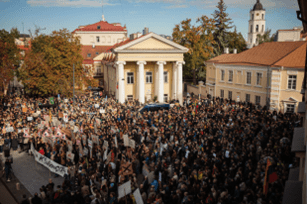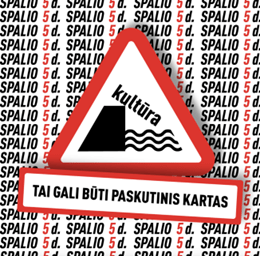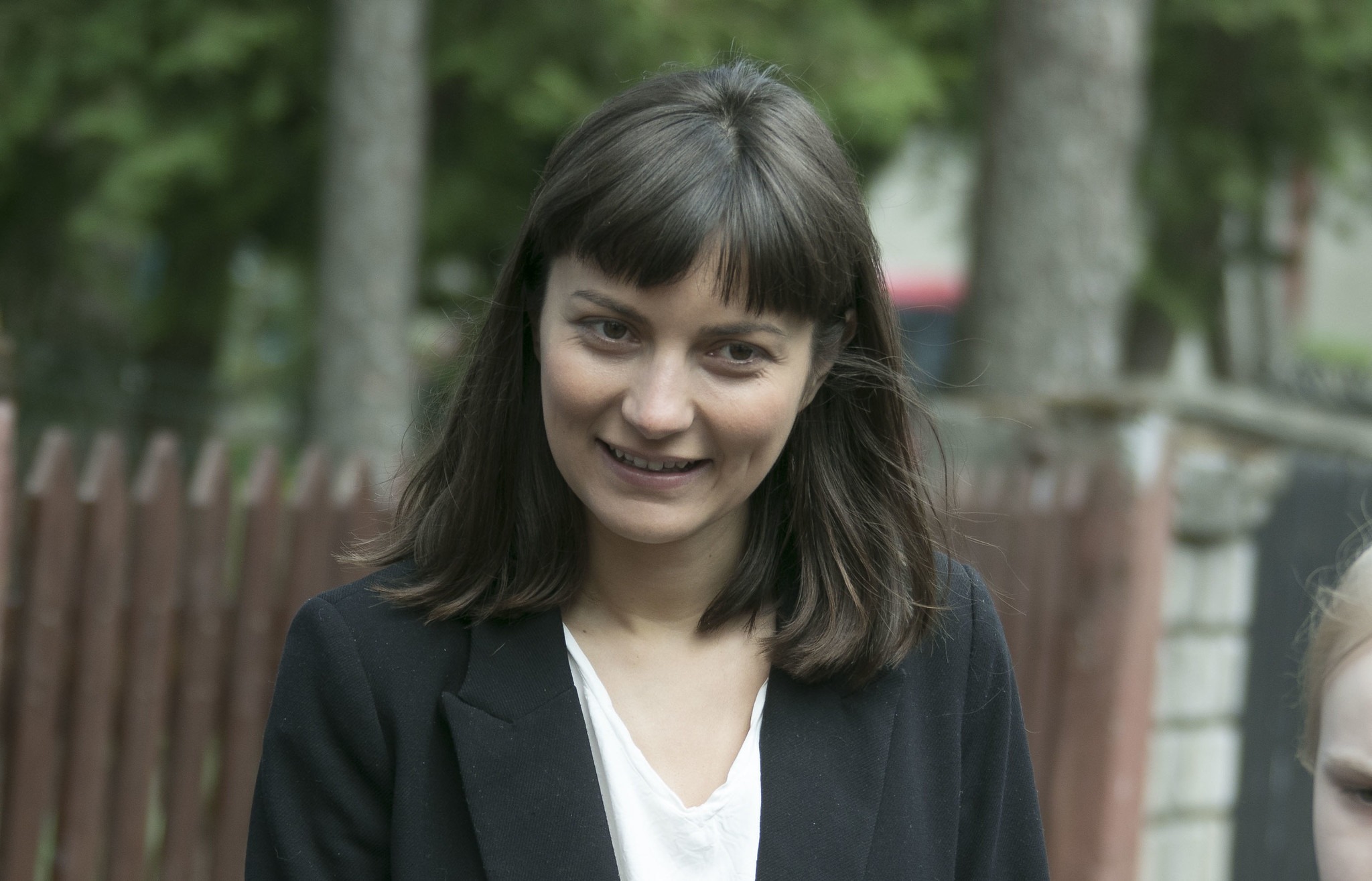
Key Insights:
Throughout September, Kremlin-aligned media in Lithuania further intensified efforts to discredit the national government, undermine trust in NATO, and visibly polarize Lithuanian society. Malign actors actively exploited international incidents and domestic political transitions to erode public confidence in state institutions and amplify cultural divisions. Among the most discussed topics were the following:
- Airspace security was weaponized as a narrative tool after reports that Polish forces shot down Russian drones violating NATO airspace. Kremlin-linked media dismissed the incident as a “bluff” and a staged provocation designed to falsely implicate Russia and justify increased NATO militarisation. Polish defense capabilities were mocked, and doubts were cast on the credibility of NATO security architecture as a whole.
- The recent appointment of new PM Inga Ruginienė received significant amplification, with Kremlin-aligned sources framing her as a brave opponent of the ruling “conservative clan.” Ruginienė was positioned as a voice of the people, standing against the entrenched political establishment.
- The ongoing formation of Lithuania’s new cabinet remained a central narrative, with particular attention to alleged conspiracies, internal power struggles, and unclear decision-making. Kremlin-affiliated outlets accused President Nausėda of deepening the political crisis and violating constitutional norms. Calls for impeachment circulated widely in malign channels, fueling mistrust in the legitimacy of democratic processes and portraying Lithuania as a politically unstable and failing state.
- The appointment of the new Minister of Energy became another key topic in Kremlin-aligned media. These sources claimed that the selection process was not about finding the best candidate, but about protecting powerful interests. They claimed the ruling political group, often called the “conservative clan”, was trying to keep control over critical state-owned companies, especially Ignitis, which handles electricity and energy. According to this narrative, government jobs were allegedly being handed out to protect allies and block any fundamental changes or outside checks.
- Public anger over the appointment of Ignas Adomavičius as Minister of Culture was used by Kremlin-aligned media to stir up cultural tensions. Kremlin-linked outlets celebrated his appointment as a symbolic defeat of the liberal elite, branding it a “victory over leftist lobbyists and satanists.” Civil society actors and cultural professionals began organizing large-scale demonstrations, with mass protests and a coordinated petition campaign against the appointment. These efforts were reframed as part of a broader “culture war” narrative pitting traditional values against liberal degradation. Protesters were mocked, and their concerns dismissed as elitist hysteria. At the same time, Kremlin-aligned narratives downplayed growing resistance to Adomavičius’s tenure from the broader cultural sector.
- Vilnius Mayor Valdas Benkunskas was targeted after congratulating Lithuania’s first legally recognised same-sex partnership. Kremlin-aligned outlets used the gesture as a catalyst for cultural backlash, accusing the mayor of turning City Hall into an “LGBT sanctuary.” The narrative portrayed progressive values as a form of foreign moral imposition, further entrenching divisions on identity and social issues.
- Andrius Tapinas, a prominent civic voice, was personally attacked following his critical reporting on Adomavičius’s qualifications. Kremlin-aligned media sought to discredit Tapinas’s investigations, mocking his efforts and portraying him as a destabilizing figure.
Taken together, Kremlin-aligned media in Lithuania intensified their efforts to erode public trust in institutions throughout September by spreading sweeping anti-government narratives. These included claims that the leadership is worsening living conditions, deceiving the population, and threatening national sovereignty. Alongside attacks on NATO credibility, controversial government appointments, and cultural and social issues, these narratives aimed to portray Lithuania as unstable, corrupt, and divided. Although largely unsubstantiated, such messaging seeks to amplify disillusionment and weaken the country’s democratic resilience against foreign influence.
Overview of the findings:
- Four outlets of alternative media operating in Lithuania were analysed during this month, and 852 articles were scrutinised.
- Throughout September, Kremlin-aligned media in Lithuania focused heavily on a dominant anti-government narrative, aiming to undermine public trust in both the local government and NATO. This narrative took various shapes and forms to ensure it resonated with as many people as possible. One prominent aspect was the controversy surrounding Inga Ruginienė’s nomination as Prime Minister and public backlash following her appointment. At the same time, the formation of Lithuania’s new cabinet of ministers became another cornerstone of anti-government messaging. Kremlin media amplified accusations of backroom deals and political obstruction, portraying the situation as a constitutional crisis and casting doubt on the legitimacy of the leadership. The appointment of Ignas Adomavičius as Minister of Culture sparked significant public backlash, which was used to intensify cultural divisions. Kremlin-aligned outlets portrayed the protests against him as a battle between traditional Lithuanian values and a corrupt elite. Meanwhile, the Belarusian drone incident was framed as a symbol of Lithuania’s defense weakness, mocking the state’s inability to protect its airspace and reinforcing the message of national vulnerability. This anti-government narrative evolved through various angles, from political crises and corruption claims to cultural and defense issues, all with the aim of presenting Lithuania as fractured, weak, and vulnerable. The strategy of malign actors was clear: to weaken public confidence in the government, stir disillusionment with NATO alliances, and promote a narrative of instability, making Lithuania appear isolated and politically unstable.
- The YouScan media monitoring tool managed to capture 44,954 content pieces (slightly smaller number compared to the 47,881 pieces captured the previous month) throughout September related to pro-Kremlin media in Lithuania, including different posts, videos, tweets, and comments written under them.
- The graph below reflects daily engagement levels throughout September, showing several notable spikes in activity. Unlike a single major event dominating the engagement, there were multiple peaks of similar size spread throughout the month. These spikes were closely tied to the development of anti-government narratives, with topics such as Inga Ruginienė’s nomination and the appointment of Ignas Adomavičius as Minister of Culture standing out. Kremlin-aligned media heavily exploited these issues to reinforce narratives of political instability and government dysfunction, with the peaks reflecting heightened focus on these ongoing controversies.

Story of the Month:
Ignotas Adomavičius’ Appointment as Lithuania’s Minister of Culture Sparks Massive Reactions
Ignotas Adomavičius’ appointment as Lithuania’s new Minister of Culture has quickly become the most discussed story of the month, with reactions flooding both the media and public discourse. The announcement has sparked widespread debate, dividing opinions between those who greatly doubt his competencies and those who congratulate new people entering the political arena. The story has dominated the news; this controversy has not been limited to the usual political debate but has also triggered a surge of online discussions, protests, and mass media coverage.
In Lithuania, certain media outlets that resonate with Kremlin-aligned narratives have been quick to support Adomavičius. They saw his rise as a victory for traditional and conservative values over what they describe as a “leftist” agenda. These media outlets, which often push anti-government and anti-Western narratives, have portrayed his appointment as a positive development for Lithuania. One of the many heavily engaged examples circulating online was a publication that published the following statement in support of Adomavičius:
“Finally, we will have a Minister of Culture who works for the people, not leftist lobbyists or Satanists. Finally, the cancelers of value-based culture will be canceled for good! <…> He will force the media to stop lying to the nation by catering to the interests of leftist lobbyists and thus cleanse our culture of the leftist trash <..> Ignas Adomavičius, as a like-minded ally of Charlie Kirk, will shape culture based on Christian values..! <…> (see screenshot of the post and its notable engagement on the right) This post, among many similar ones, was a clear example of how malign media outlets are using Adomavičius’ appointment to fuel the anti-government narrative. The use of phrases like “leftist lobbyists,” “Satanists,” and “cultural trash” reflects a deep polarization and a deliberate push to frame Adomavičius as a protector of Lithuania’s “true” values against what they see as “harmful foreign ideologies”.

Such narratives typically originate from sources that are critical of the Lithuanian government and its alignment with Western liberal policies. They portray Adomavičius not only as a political leader but as a figure who will fight against what they describe as the “degradation” of Lithuania’s cultural identity by “globalist” forces. This kind of rhetoric has resonated with many followers of the Kremlin-aligned media and its audiences.



Adomavičius’ appointment quickly led to visible unrest. One of the first and most symbolic protests took place outside the Presidential Palace in Vilnius (see picture on the right). A large group of people, including artists, students, and civic activists, gathered to express their opposition. Protesters accused the government of pushing cultural policy in a dangerous direction – one that favors strict ideology over creativity and diversity – and stated that candidates from the “Nemuno Aušra” party do not align with Lithuania’s cultural identity. Chants and speeches during the demonstration focused on defending democratic values and resisting what they described as cultural censorship. In response to growing concerns, civil society groups and opposition leaders have announced a much larger, countrywide protest for October 5. This event is being called a “warning protest” and is expected to mobilize people across Lithuania; the sign of culture (see on the lower left) “going down” became the symbol of this whole movement and its slogan “it might be the last time” refers to the idea that it might be the last time when people can freely go to the streets and express their opinion in a fully democratic country. Organizers say this is just the beginning of a broader resistance movement aimed at defending an open, democratic culture. Many fear that Adomavičius, or any other candidate from the “Nemuno Aušra” party, will promote policies that silence alternative voices and restrict state support for artists and institutions that don’t align with his or his party’s worldview.


All of the reactions to the appointment of Adomavičius reveal that culture is no longer just about art, music, or literature – it has become a key part of political power and public influence. The Ministry of Culture today oversees not only cultural heritage but also areas such as public education, values, historical memory, media funding, and can even influence the fight against disinformation. The Minister is responsible for institutions such as the Chief Archivist’s Office and provides financial support to media, including the national broadcaster LRT. Because of this wide reach, whoever leads the ministry can have real influence over how society thinks, learns, and understands its own identity.
That is why Ignas Adomavičius’ appointment has become so controversial. His support from Kremlin-aligned voices has raised concerns that cultural policy may shift toward ideological control, rather than supporting open, democratic, and diverse expression. As the cultural field becomes increasingly intertwined with national security, historical truth, and public trust, the decisions made now are especially crucial in this tense world context.









